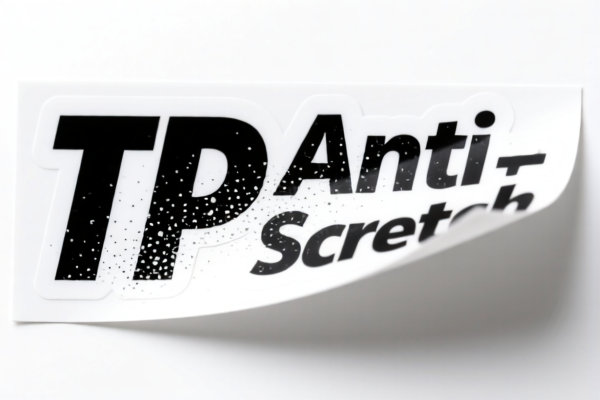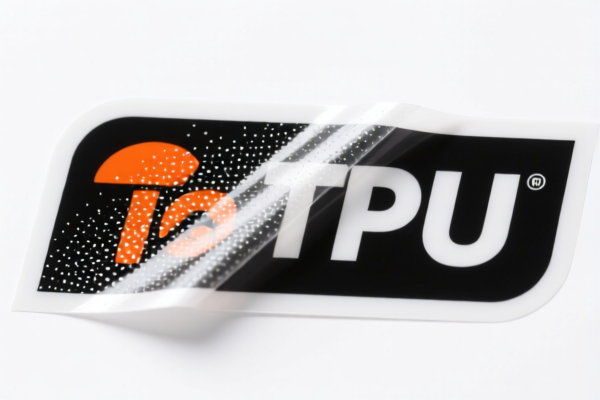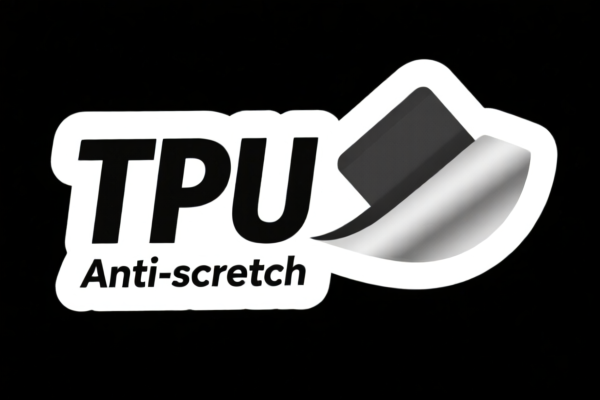| HS Code | Official Doc | Tariff Rate | Origin | Destination | Effective Date |
|---|---|---|---|---|---|
| 3919905060 | Doc | 60.8% | CN | US | 2025-05-12 |
| 3919901000 | Doc | 61.5% | CN | US | 2025-05-12 |
| 3921904090 | Doc | 34.2% | CN | US | 2025-05-12 |
| 3921905050 | Doc | 34.8% | CN | US | 2025-05-12 |
| 5609004000 | Doc | 58.9% | CN | US | 2025-05-12 |
| 5404900000 | Doc | 55.0% | CN | US | 2025-05-12 |
| 5404198080 | Doc | 61.9% | CN | US | 2025-05-12 |
| 8523802000 | Doc | 37.5% | CN | US | 2025-05-12 |
| 8548000000 | Doc | 55.0% | CN | US | 2025-05-12 |




TPU Anti-Scratch Sticker
A TPU anti-scratch sticker is a thin, flexible protective film designed to prevent damage to surfaces from scratches, scuffs, and minor abrasions. "TPU" stands for Thermoplastic Polyurethane, a specific type of plastic with unique properties that make it suitable for this application.
Material
- Thermoplastic Polyurethane (TPU): This is a class of polyurethane plastics with high elasticity. It possesses excellent abrasion resistance, cut and tear resistance, oil resistance, and flexibility, even at low temperatures. It also exhibits good transparency and can be manufactured in various thicknesses. Some stickers incorporate multiple layers, including an adhesive layer, a TPU layer for impact and scratch absorption, and potentially a top layer for added protection or specific finishes.
Purpose
The primary purpose of a TPU anti-scratch sticker is to safeguard vulnerable surfaces from cosmetic and functional damage caused by everyday wear and tear. This extends the lifespan of the protected item and maintains its aesthetic appearance.
Function
- Scratch Resistance: The TPU material acts as a barrier, absorbing and dispersing the energy of impacts and preventing scratches from reaching the underlying surface.
- Impact Absorption: Offers a degree of protection against minor impacts, reducing the likelihood of cracks or dents.
- Self-Healing (some types): Certain TPU stickers possess self-healing properties, where minor scratches and swirl marks can disappear over time due to the material's inherent elasticity and molecular structure.
- Transparency: Typically transparent, allowing the original appearance of the protected surface to remain visible.
- Adhesion: Utilizes an adhesive layer to securely bond to the surface without leaving residue upon removal (though adhesive quality varies).
Usage Scenarios
- Mobile Phone Screens & Cases: A very common application, protecting against scratches from keys, coins, and other objects.
- Smartwatches & Fitness Trackers: Protects the screen and body from scratches during activity.
- Automotive Surfaces: Used on dashboards, infotainment screens, door panels, and other interior components.
- Lens Protection: Cameras, camera lenses, and displays benefit from TPU protection.
- Electronic Devices: Tablets, laptops, and other portable electronics.
- Paint Protection Film (PPF): A thicker, more durable form of TPU used to protect vehicle paint from chips, scratches, and environmental damage.
Common Types
- Standard TPU Stickers: Single-layer films offering basic scratch protection.
- Multi-Layer TPU Stickers: Incorporate additional layers for enhanced impact resistance, self-healing properties, or anti-fingerprint coatings.
- Self-Healing TPU Stickers: Utilize a specialized TPU formulation that allows minor scratches to disappear over time.
- Hydrogel Film: While not strictly TPU, hydrogel films are a similar type of screen protector offering self-healing properties and good scratch resistance. Often marketed alongside TPU films.
- Matte TPU Stickers: Provide a non-glossy finish, reducing glare and fingerprints.
- Clear TPU Stickers: Offer maximum transparency.
Based on the provided information, the following HS codes may be relevant to “tpu anti scratch sticker”:
-
3919905060: This HS code covers self-adhesive plates, sheets, film, foil, tape, strip and other flat shapes, of plastics, whether or not in rolls: Other: Other Other. This is a broad category encompassing various plastic films and sheets with adhesive backing. TPU (Thermoplastic Polyurethane) falls under the category of plastics. The “Other” classification suggests it doesn’t fall into more specific categories within this heading.
- Chapter 39: Plastics and articles thereof.
- Heading 3919: Self-adhesive plates, sheets, film, foil, tape, strip and other flat shapes, of plastics, whether or not in rolls.
- Subheading 391990: Other.
- Tax Rate: Basic tariff: 5.8%, Additional tariff: 25.0%, Post-April 2, 2025, additional tariff: 30.0%. Total tariff: 60.8%.
-
3921904090: This HS code covers other plates, sheets, film, foil and strip, of plastics: Other: Other: Flexible Other. If the TPU sticker is flexible, this code may be applicable.
- Chapter 39: Plastics and articles thereof.
- Heading 3921: Other plates, sheets, film, foil and strip, of plastics.
- Subheading 392190: Other.
- Tax Rate: Basic tariff: 4.2%, Additional tariff: 0.0%, Post-April 2, 2025, additional tariff: 30.0%. Total tariff: 34.2%.
-
3921905050: This HS code covers other plates, sheets, film, foil and strip, of plastics: Other: Other: Other Other. This is a general category for plastic plates, sheets, film, foil, and strip not specifically classified elsewhere.
- Chapter 39: Plastics and articles thereof.
- Heading 3921: Other plates, sheets, film, foil and strip, of plastics.
- Subheading 392190: Other.
- Tax Rate: Basic tariff: 4.8%, Additional tariff: 0.0%, Post-April 2, 2025, additional tariff: 30.0%. Total tariff: 34.8%.
According to the provided reference material, the HS code options related to 'tpu anti scratch sticker' are limited, with only the following 3 found.
It is important to note that the applicable tariff rates are subject to change, particularly after April 2, 2025, as indicated in the reference material.
Customer Reviews
No reviews yet.